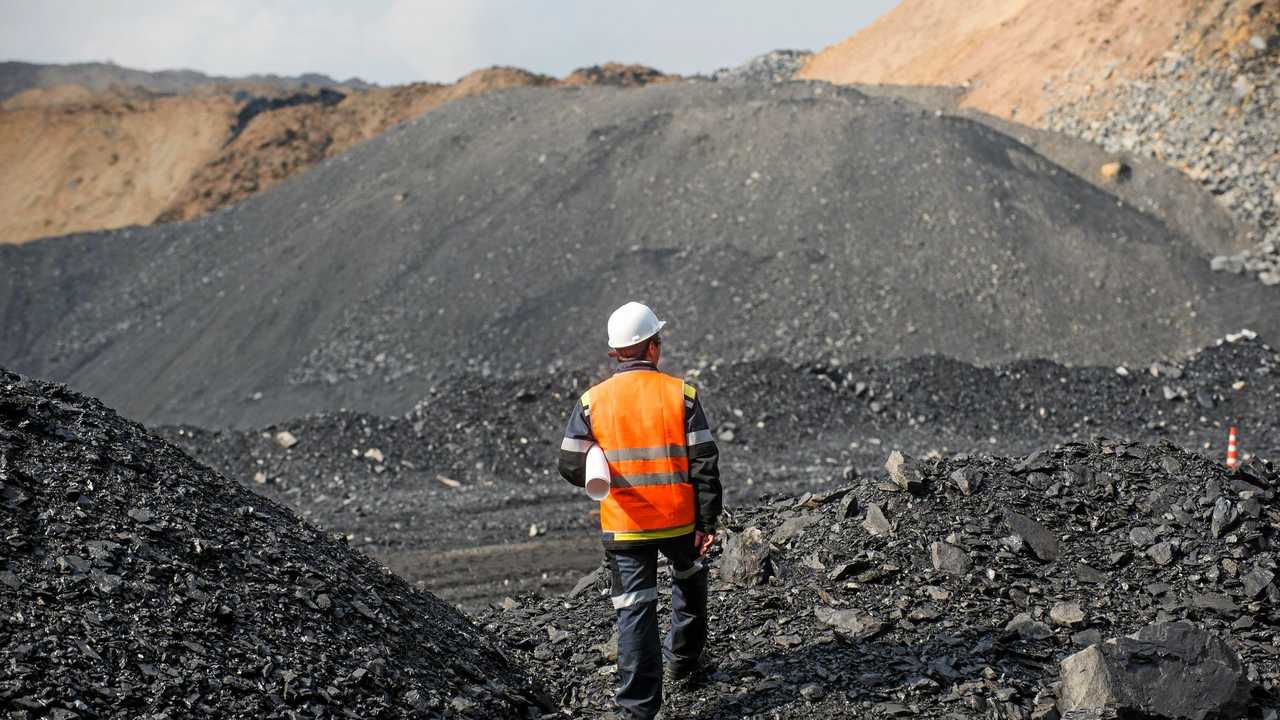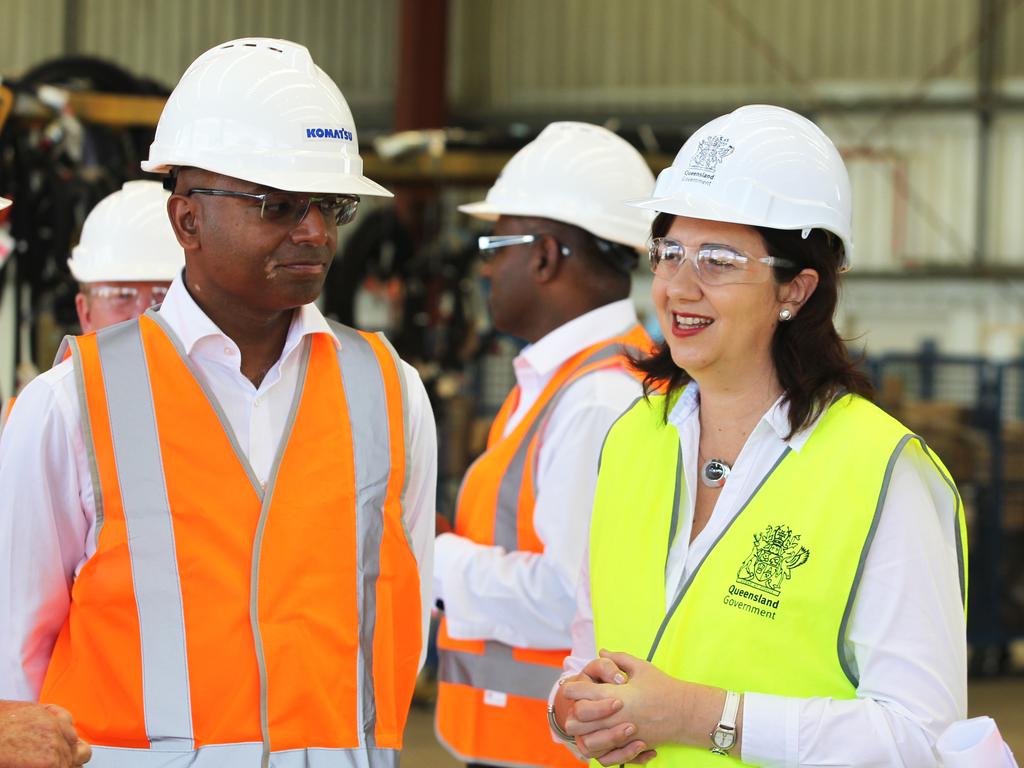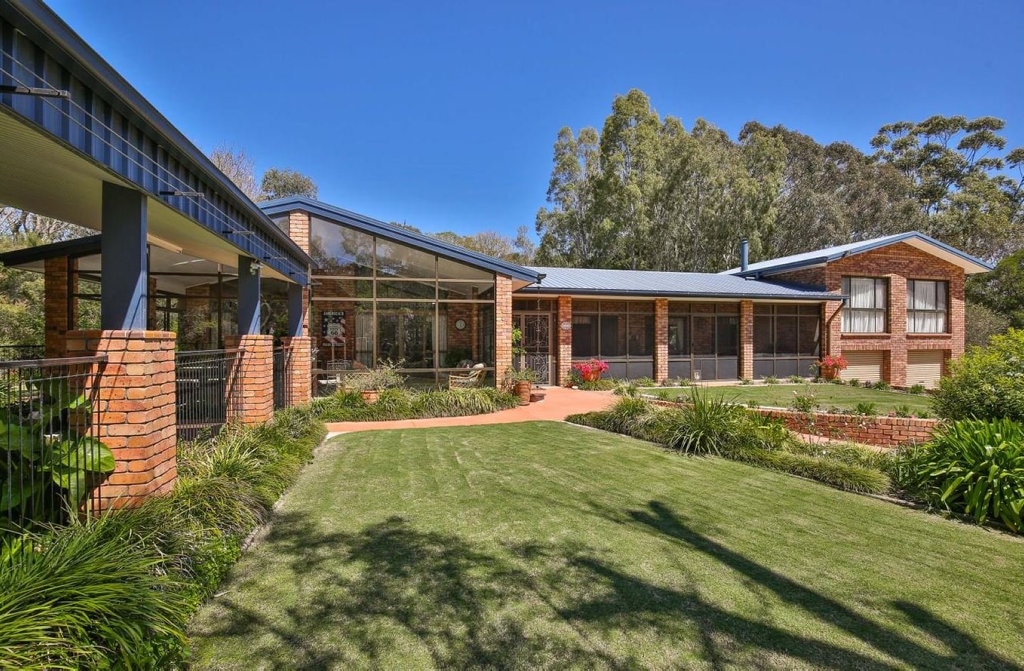Adani megamine finally gets green light
The Adani megamine has finally been approved, with the green light given for the controversial Indian miner’s groundwater management plan.

Mackay
Don't miss out on the headlines from Mackay. Followed categories will be added to My News.
UPDATE: The Adani megamine has finally been approved, with the green light given for the controversial Indian miner's groundwater management plan.
The decision comes after Premier Annastacia Palaszczuk performed a stunning backflip in the wake of Labor's federal election drubbing, imposing a deadline on her own government to resolve the mine's two final management plans.
In an extraordinary admission, she declared she was "fed up" with the process and ordered the Co-ordinator-General to intervene.
The controversial black-throated finch management plan, which was subjected to an 11th hour review, was ticked off on May 31.
ADANI: Approval an appaling 'slap in the face'
JOBS: The Adani coal mine positions earning more than $200K
While the Government imposed extra conditions on the miner, it also pared back initial demands to count every single finch on the site.
Adani has previously said it would be able to begin construction within days if both approvals were secured, with equipment already on site.

Nearly 19,000 workers have applied for the estimated 1500 construction and ramp jobs expected over the next two years.
Further rolling deadlines from June to September are set for leases and licences, allowing rail construction and operation, a workers' camp and airport and the finalisation of a royalties deal.
The State Government's Environment Department has approved the mine on stringent conditions.
In a statement released earlier, it reveals concerns were raised last week by Flinders University scientists that the Permian aquifers should not be ruled out as a Doongmabulla Springs Complex source.
Additional measures have been placed in the management plan to address this, including installing a new bore below the Rewan Formation, in the vicinity of the Doongmabulla Springs Complex, to determine if the Permian aquifers form a source for the springs.
Adani will also need to review hydrological, hydrochemistry analyses and seismic information as part of its second geological and groundwater remodelling after box cut mining starts, and review seismic information pertaining underground mining impacts which is scheduled to start in year 10 of the project.
Underground mining will not start until these actions are completed and "only if predicted impacts are consistent with approved impacts."
The Indian miner lodged its most recent version of its plan yesterday to the department.
The department said it was satisfied the plan "sufficiently establishes the main source aquifer of the springs as the Clematis Sandstone."
"CSIRO and Geoscience Australia also confirmed that some level of uncertainty in geological and groundwater conceptual models always exists," the statement said.

Adani CEO Lucas Dow released a statement confirming the approval.
"Adani Mining received advice today from the Queensland Government's Department of Environment and Science that the Groundwater Dependent Ecosystems Management Plan (GDEMP) has been finalised and approved," he said.
"This is confirmation the plan complies with all regulatory conditions set by the Australian and State Governments, bringing to a close a two-year process of rigorous scientific inquiry, review and approvals. This includes relevant reviews by Australia's pre-eminent scientific organisations CSIRO and Geoscience Australia.
"The finalisation of the GDEMP and Black-throated Finch Management Plan paves the way for construction to commence on the Carmichael Project and the delivery of much needed jobs for regional Queenslanders.
"Moving forward, our priority is ensuring the safety of everyone who works on the project and that all construction activity meets the strict environmental requirements we have agreed to meet in our management plans and approvals."
Mr Dow said activities like finalising contracts, mobilising equipment, recruitment and completing inductions would continue in coming days.
"These preparatory actions will enable us to then start construction activities including fencing, bridge and road upgrades, water management and civil earthworks on the mine site.
"The level of construction activity will then steadily increase over the coming weeks.
"The project will deliver 1,500 direct and 6,750 indirect jobs during ramp up and construction, with Rockhampton and Townsville the primary hubs for employment.
'The Whitsunday, Isaac, Central Highlands, Mackay, Charters Towers and Gladstone regions will also benefit from work packages and employment opportunities."
Green groups immediate reacted with anger the decision accusing the Government of condemning the environment for political gain.
State Parliament's lone Greens MP Michael Berkman took to Twitter to warn the campaign to stop Adani would continue.
"Queensland Labor has approved Adani's groundwater management plan. But make no mistake, this is not the end. Labor's internal meltdown and capitulation to coal billionaires won't make an entire movement of people disappear … we're just getting started.
"If Adani really believes they'll get their way, they've got another thing coming. "They'll keep trying to make us feel small and they'll tell us we can't stop them. "But every major win in social movements throughout history was 'impossible' until it was done."
EARLIER: REPORTS indicate the Adani coal mine project in the Galilee Basin has finally been approved.
The Department of Environment was expected to hand down its decision on the mine's groundwater management plan today - the final approval required for the mine to start construction.
The DES have released a statement regarding the approval.
"The Department of Environment and Science (DES) approved Adani's Groundwater Dependent Ecosystem Management Plan (GDEMP) today," a department spokesperson said.
"Adani submitted its most recent version of the plan, addressing the department's feedback, yesterday.
"The GDEMP's assessment has been rigorous and based on the best available science. DES and Adani have met regularly to ensure the plan is robust and provides the maximum environmental protection.
"In assessing the plan, both Adani and DES took on board advice from CSIRO and Geoscience Australia - the same advice considered by the Commonwealth Government in approving an earlier version of the GDEMP in April this year.
"DES sought further clarification and advice from CSIRO and Geoscience Australia, which it received on 7 June 2019."
The spokesperson said based the advice from CSIRO and Geoscience Australia, the DES was satisfied that the GDEMP sufficiently established the main source aquifer of the springs as the Clematis Sandstone.
"CSIRO and Geoscience Australia also confirmed that some level of uncertainty in geological and groundwater conceptual models always exists," the spokesperson said.
"DES has required additional commitments from Adani to undertake further scientific work over the next two years. This is required to identify any potential contribution from other aquifers and strengthen the GDEMP."
Additional commitments in the approved GDEMP include:
>> Further work to improve the understanding of the source aquifers of springs in the locality, particularly the Doongmabulla Springs Complex, including:
- Undertaking detailed hydrogeochemical analysis of groundwater and spring samples from different springs within each spring complex
- Undertaking isotopic analysis (including noble, radioactive gases and strontium isotopes where isotopic analysis is not sufficient)
- Examining core samples from new bores to attain a better understanding of hydraulic properties and provide detailed geological mapping
- Incorporating air-borne electro-magnetic modelling undertaken by Geoscience Australia to improve hydrogeological understanding of the area.
>> Using a bore in the Dunda Beds (also known as the Rewan Formation) as an early warning trigger for groundwater drawdown monitoring in the Carmichael River.
>> Additional measures in the GDEMP also address concerns raised last week by Flinders University scientists that the Permian aquifers should not be ruled out as a Doongmabulla Springs Complex source.
>> These include installing a new bore below the Rewan Formation, in the vicinity of the Doongmabulla Springs Complex, to assist in determining if the Permian aquifers (Colinlea) form a source for the springs.
The spokesperson said Adani was also required to review hydrological, hydrochemistry analyses and seismic information as part of its second geological and groundwater remodelling after box cut mining starts, and review seismic information pertaining underground mining impacts (which is scheduled to start in year 10 of the project).
"Further seismic studies may also need to be undertaken," the spokesperson said.
"Underground mining will not commence until these actions are completed and only if predicted impacts are consistent with approved impacts. Likewise, if the hydrogeological conceptualisation differs from that of the approved project, approval must be sought prior to relevant impact causing activities."
The GDEMP was the second of the two environmental management plans (the other being the Black-Throated Finch Management Plan, approved on 31 May) that needed to be approved before Adani could begin significant mining activities at its Carmichael mine site.
Both plans are a requirement of Adani's EA.
More to come.
Originally published as Adani megamine finally gets green light





